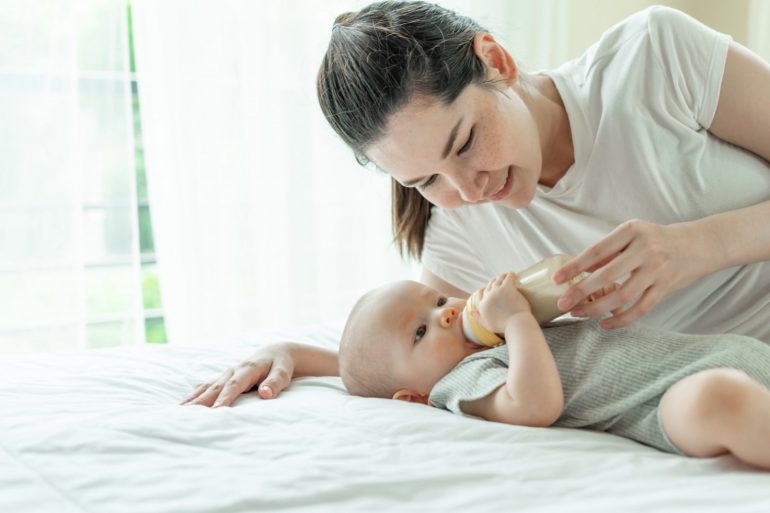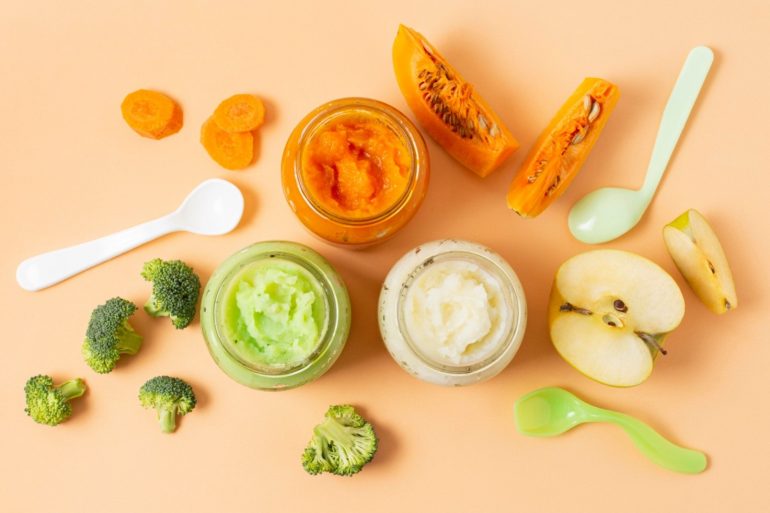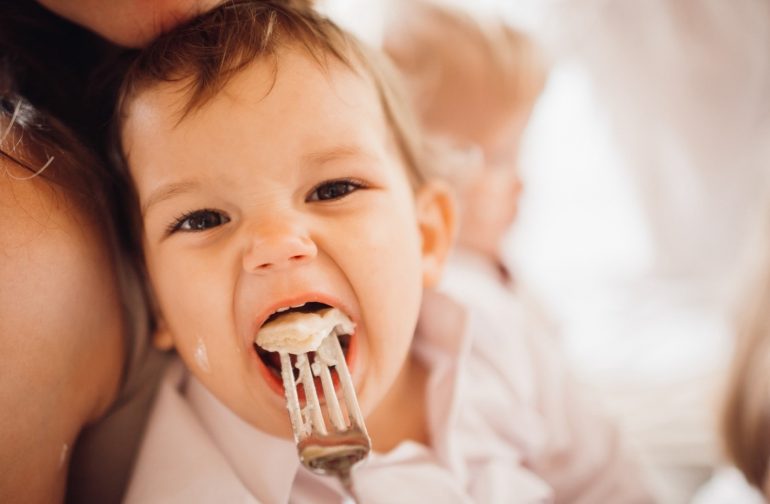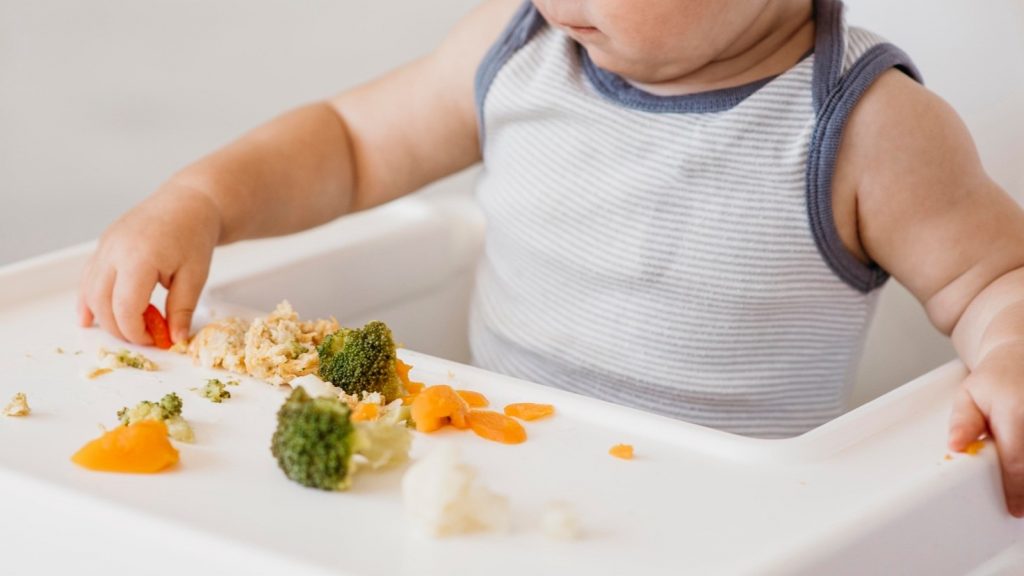All your healthy eating while you’re pregnant has paid off and your little bub is growing well and strong for the first six months. Now, you’re faced with the whole weaning process and bombarded with all kinds of information on what food to start with and those to avoid till your little one is at least 18 months old.
Foodborne illness is a serious health issue, especially for your new baby and any other kids in your home. Infants and young children are particularly vulnerable to foodborne illness because their immune systems are not developed enough to fight off foodborne bacterial infections. That’s why extra care should be taken when handling and preparing their food, and for the wee little ones, when it comes to prepping and storing breastmilk and formula milk.
The Importance of Handwashing
Needless to say, this is crucial and it is the first step in keeping your little ones safe. Frequent handwashing is necessary as your hands are a seedbed of bacteria that can easily be passed on to baby and also younger tots. Bacteria from your hands can be picked up from diapers containing faeces and urine, raw meat, poultry, seafood, and eggs, pets including dogs, cats and turtles as well as gardening soil. Wash your hands before and after any food or milk prep and also teach your kids on the importance of proper handwashing.

Breastmilk Handling And Storage
Storing your expressed milk properly maximises its nutritional, immunological and antioxidant qualities. Prior to expressing and storing breastmilk, wash your hands and prepare containers or bottles (polypropylene, which is soft, semi-cloudy, and has the number five recycling symbol and/or the letters PP or preferably glass) that have been washed in hot, soapy water, rinsed and air dried. Pre-sterilised milk storage bags can also be used. Keep the following safety tips by La Leche League International in mind if you’ve to express and store breastmilk for your baby.
- All milk should be dated before storing. Use the first in, first out rule and use the oldest milk first.
- Storing milk in two to four ounces (60 to 120 ml) amounts may reduce waste.
- Refrigerated milk has less fat loss and more anti-bacterial and protective properties than frozen milk.
- When combining milk expressed from different pumping sessions, ensure fresh milk is chilled in the refrigerator before adding it to previously expressed milk.
- Refrigerate milk if baby will consume it but for not more than five days
- Freeze milk for not more than six months.
- Place milk right at the back of the fridge or freezer where it is the coolest. Keep milk away from raw meat or fish.
- Use a cooler bag to store milk in the interim before placing in fridge or freezer.
Formula Milk Handling And Storage
When it comes to breastmilk, we tend to be more vigilant about the handling and storing process. However, proper handling and storing of formula milk is as equally important. Similarly before prepping formula milk, wash your hands thoroughly and use only washed, air dried bottles. Here are some guidelines:
- Always adhere to the formula brand manufacturer’s instructions and measurements. Check the date of expiry on the tip before purchase.
- Do not put the formula milk back into the fridge if your baby has not finished a feed as bacteria and germs from his/her mouth can enter the bottle.
- Throw away formula milk that has been left outside at normal room temperature for more than two hours as bacteria and germs will have grown and multiplied.

Progression Of Weaning
Food safety is not only about the handling and storing of milk or food, but also involves the weaning progression from the time when your baby transitions from milk to solids. At six months, baby’s first foods should be rice cereals and purees that are all-natural. Smashed avocados are great too. You can start off with one feed of solids per day and gradually increase the quantity. At any point in time, you need to check for any adverse food reaction, no matter how slight. This gives you an indication on how well your baby is responding to certain foods. Once your bub is around seven to eight months, you can up the dosage further and introduce other fruits and foods of thicker consistency to get him/her used to chewing. From nine months onwards, your little one is ready for trying out food at the table! Check out HealthHub’s guide to weaning here.
Food Handling And Storage Dos And Don’ts
Once your baby starts on solids, there’s a whole different set of food safety rules that you’ve to bear in mind.
DOs
- Always separate cooked and raw foods. It’s best to have separate chopping boards for vegetables/fruits and meat.
- Meats must be cooked through thoroughly.
- When reheating food for your baby, ensure that it’s brought to a full boil before letting it cool down. Test the temperate before feeding your little one.
- If cooking is not an option and you’re buying jarred purees off the shelf, check the expiry date and ensure that there are no dents on the lids or chip in the glass. Leftover food from jars must be discarded because bacteria from your child’s saliva has already entered into the food.
DON’Ts
- Do not give your baby honey just yet if he/she is below 12 months old as it may contain the c lostridium botulinum organism that could cause serious illness or even death.
- Babies and younger kids should not be given raw or unpasteurised milk as It may contain harmful bacteria.
- Food should not be left out at room temperature for more than two hours.
You can download the U.S. Food & Drug Administration (FDA) charts for recommended cooking temperatures here and also refrigerator/freezer storage times for foods here.

Safe Eats For Dine-In And Takeaway
Eating out with your little bub is a huge milestone especially once he/she can eat more textured foods. That being said, being a tad more cautious about where you dine and how food is prepared and served is important. Food should be cooked thoroughly for the young tummies especially meats, fish and also eggs. Meals should be served piping hot and not lukewarm, worse yet, cold. Letting your kids try raw food like sashimi or foods make with raw fish is risky as these contain more bacteria and parasites. Even raw or undercooked shellfish like clams and oysters should be avoided initially when you’re just introducing your baby to solids.
Adhere to the two-hour rule when it comes to takeaway food. If you’re not planning to consume the hot food then, keep it in the oven with the temperature set at or above 100 degrees Celsius. When in doubt about whether to feed your kids food from a doggie bag or those you’ve left out at room temperature, always refer to the two-hour rule and be safe.
Once your baby starts on solids, choking is also a concern. Avoid foods that pose a risk of choking especially when during the initial stage of weaning. Have your baby or toddler sitting upright in a designed feeding chair, high chair or booster seat does help to minimise this risk. By following the above food safety guidelines strictly, you can keep food-borne illnesses at bay. However, at times, incidents can happen so always consult your paediatrician.
References:
https://www.llli.org/breastfeeding-info/storingmilk/
https://www.happyfamilyorganics.com/learning-center/baby/food-safety-for-babies-and-toddlers/
https://www.fda.gov/food/people-risk-foodborne-illness/food-safety-infants-toddlers
https://www.singhealth.com.sg/patient-care/conditions-treatments/weaning-food-nutrition
https://www.fda.gov/food/people-risk-foodborne-illness/once-baby-arrives-food-safety-moms-be
https://www.fda.gov/food/people-risk-foodborne-illness/food-safety-moms-be
https://www.healthhub.sg/live-healthy/1227/baby-getting-ready-for-solids



